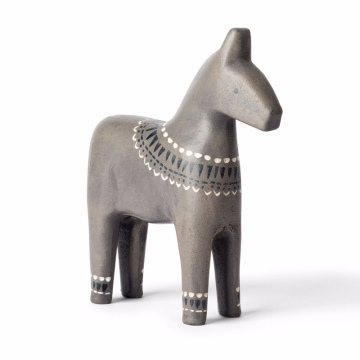Introduction to Spain's Unique Fauna
Spain is renowned for its diverse ecosystems that host an array of unique fauna. From the lush Mediterranean coast to the towering peaks of the Pyrenees, the country boasts a variety of natural habitats that support numerous species. The rich biodiversity found in Spain is not only impressive but essential for maintaining ecological balance. Coastal areas, wetlands, forests, and mountainous regions create environments where distinct animals thrive, including the Iberian lynx, the Spanish imperial eagle, and various species of reptiles and amphibians.
The Iberian Peninsula's varied climates foster unique adaptations among wildlife, leading to the development of endemic species found nowhere else in the world. This natural wealth highlights the critical nature of conservation efforts, especially as urbanization and climate change pose threats to these habitats. Consequently, Spanish zoos have become pivotal in safeguarding exotic animals and promoting biodiversity awareness through dedicated educational programs. These institutions contribute significantly to the conservation of endangered species through breeding programs and habitat restoration initiatives.
Moreover, Spanish zoos not only focus on the preservation of native species but also emphasize the importance of global wildlife conservation. By participating in international efforts and collaborations, they help to combat issues relating to wildlife trafficking and habitat destruction. This aligns with Spain's commitment to environmental protection and showcases the essential role zoos play in fostering a sense of responsibility among the public. As centers for learning and rehabilitation, they provide invaluable resources for awareness campaigns and research on the conservation of both local and exotic animals.
Top Zoos in Spain: A Closer Look
Spain is home to several renowned zoos that not only provide entertainment but also champion animal welfare and conservation efforts. One of the most notable is the Barcelona Zoo, which features a wide array of exotic animals. Established in 1892, the zoo occupies the picturesque Parc de la Ciutadella and is known for its commitment to education and conservation. It hosts over 300 species, including the endangered white rhinoceros and the critically endangered California sea lion. The zoo's facilities promote animal well-being, ensuring that every habitat closely mirrors the natural environment of its inhabitants.
Another significant facility is the Madrid Zoo Aquarium. This zoo is unique for its dual focus on traditional zoo elements and an expansive marine exhibit. Spanning over 20 hectares, it is home to more than 500 species, including giant pandas and an impressive collection of marine life. The Madrid Zoo Aquarium is particularly praised for its conservation programs, which aim to protect endangered species through breeding and rehabilitation initiatives. The aquarium section enhances educational opportunities, showcasing the importance of marine ecosystems and wildlife protection.
Lastly, the Bioparc Valencia stands out for its innovative approach to zoo design, emphasizing the concept of “immersion”. Visitors can expect to experience carefully constructed environments resembling natural habitats, where animals roam freely. Bioparc Valencia houses over 300 species, focusing on African wildlife such as lions, giraffes, and elephants. It promotes ethical practices, engaging visitors in discussions about biodiversity and conservation. The zoo also supports various conservation programs, both locally and globally, aiming to ensure the longevity of numerous species.
Across Spain, these zoos exemplify the evolving role of zoological institutions in fostering animal welfare and environmental appreciation. They serve as critical platforms for education, advocacy, and collaboration to promote the conservation of exotic species.
Unique Species to Discover
Spain is home to a rich array of unique species within its various zoos, offering visitors an opportunity to explore fascinating animals that are not only captivating in appearance but also crucial for biodiversity conservation. One such species is the Iberian Lynx, an endangered feline native to the Iberian Peninsula. Characterized by distinctive tufted ears and a short tail, the Iberian Lynx primarily inhabits scrubland and open forests. Conservation efforts in Spanish zoos are essential, as they contribute to breeding programs aimed at increasing population numbers and reintroducing these lynxes into their natural habitats.
Another remarkable species found in Spanish zoos is the European Brown Bear. This majestic animal, which can weigh up to 500 kilograms, thrives in forested areas and mountains. The European Brown Bear plays a vital role in its ecosystem, helping to maintain the balance of flora and fauna. Zoos in Spain are instrumental in educating the public about the challenges bears face, including habitat loss and hunting, while also supporting initiatives that promote habitat preservation and species survival.
In addition to these mammals, Spanish zoos are home to a diverse range of exotic birds, including exquisite species from the Amazon rainforest. Birds such as the Scarlet Macaw and Harpy Eagle not only captivate visitors with their vibrant colors and striking appearances but also demonstrate the importance of avian conservation. These birds often face threats from deforestation and illegal trafficking, making it imperative that zoos play an active role in their protection through captive breeding and educational outreach programs.
The presence of these stunning species underscores the importance of zoos in Spain, acting as vital centers for education, conservation, and research. By supporting the preservation of unique animals like the Iberian Lynx, European Brown Bear, and Amazonian birds, these institutions contribute significantly to global conservation efforts. Through responsible management and public engagement, they help foster a deeper appreciation for wildlife and the need for its protection.
Visiting Tips and Conclusion
When planning a visit to one of Spain’s top zoos, it is beneficial to consider several practical tips to enhance your experience. Firstly, timing your visit can significantly impact your enjoyment of the facilities. The best time to visit a zoo in Spain is typically during the spring and fall months, when temperatures are milder, and animal activity is higher. Mornings are also ideal as animals tend to be more active before the heat of the day sets in.
Regarding ticketing options, many zoos offer various packages, including discounts for families, seniors, and pre-purchased online tickets. Opting for online tickets can save you time and often come at a reduced price compared to purchasing them at the entrance. It is advisable to check each zoo's official website beforehand for any special promotions or time-specific discounts.
Families visiting the zoos will find many child-friendly activities designed to engage young visitors. Interactive exhibits, animal feedings, and educational workshops can provide an enriching experience for children and adults alike. Some zoos even feature playgrounds and picnic areas, allowing families to relax while learning about the wildlife around them.
Many Spanish zoos also emphasize their dedication to wildlife conservation through various educational programs. These programs, which may include guided tours and informative presentations, are designed to raise awareness about endangered species and conservation efforts. Participating in these activities can deepen your understanding of biodiversity issues and the role that these institutions play in preserving threatened species.
In conclusion, visiting a zoo can be much more than just a leisurely outing; it presents an opportunity to support wildlife conservation efforts and learn about various species. Therefore, embracing the enriching experiences offered by Spain's zoos helps foster a greater appreciation for animal welfare and the importance of protecting our planet's natural heritage. We encourage readers to explore these fascinating establishments and contribute to their efforts in conservation and education.








